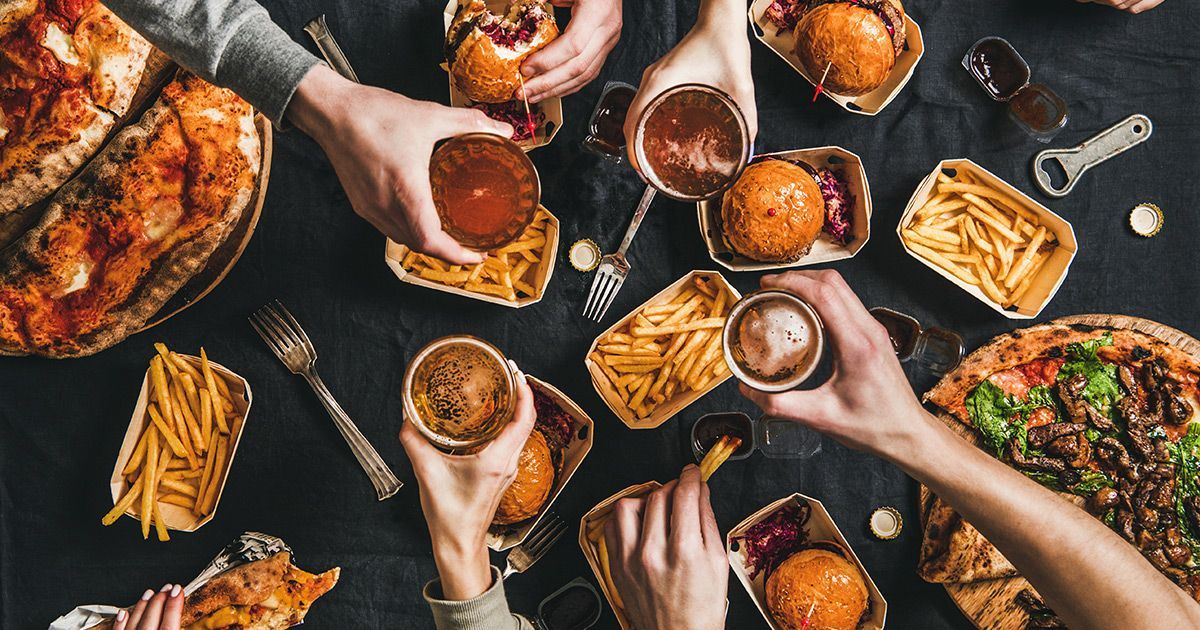The Fast Food Dilemma: Balancing Convenience and Physical Fitness in the Modern Adult Lifestyle
The Fast Food Dilemma: Balancing Convenience and Physical Fitness in the Modern Adult Lifestyle

In today's fast-paced world, the convenience of fast food is an undeniable attraction for many adults juggling busy schedules. However, this convenience comes at a cost, as the impact of fast food on physical fitness and overall health has become a controversial topic. As more people turn to fast food for quick and easy meals, it's essential to examine the effects on adult physical fitness and explore ways to maintain a healthy lifestyle without sacrificing convenience.
The Impact of Fast Food on Physical Fitness and Health
Fast food consumption can significantly impact adult physical fitness and overall health in various ways. One of the most notable effects is weight gain, as fast food items often contain high calorie content, large portion sizes, and low nutritional value. These factors contribute to the intake of excess calories and unhealthy nutrients, such as saturated fats, sugar, and sodium, which can lead to obesity and other health issues.
Additionally, consuming fast food regularly can increase the risk of chronic diseases, such as heart disease, type 2 diabetes, and certain types of cancer. These health problems are often exacerbated by the lack of essential nutrients, vitamins, and minerals found in fast food items, which can also contribute to reduced energy levels and poor physical fitness.
In summary, fast food consumption can negatively affect adults' physical fitness and health due to its high calorie content, large portion sizes, and low nutritional value, leading to weight gain, increased risk of chronic diseases, and reduced energy levels.
The Convenience Trap: Balancing a Busy Lifestyle with Healthy Eating Habits
While fast food may be an enticing option for those with busy lifestyles, it's crucial to find ways to balance convenience with healthy eating habits. One effective strategy is meal planning, which involves creating a weekly or monthly menu and shopping list to ensure you have nutritious ingredients on hand for home-cooked meals. This approach not only saves time but also allows for better control over portion sizes and nutritional content.
Another tip is to prepare healthy snacks in advance, such as sliced fruits, vegetables, or whole-grain crackers with hummus, which can be easily consumed on the go. These snacks can help curb hunger and prevent impulsive fast food choices when time is limited.
Lastly, making informed decisions when dining out can also help maintain a balanced diet. This includes opting for grilled or baked options instead of fried, choosing water or unsweetened beverages over sugary drinks, and asking for dressings or sauces on the side to control portion sizes.
By incorporating strategies like meal planning, preparing healthy snacks, and making informed decisions when dining out, adults can effectively balance their busy lifestyles with healthy eating habits while avoiding the convenience of fast food.
Incorporating Regular Exercise into a Busy Schedule
Incorporating regular exercise into a busy adult schedule can be challenging, but it is essential for maintaining physical fitness and combating the negative effects of fast food consumption. Here are some suggestions to help you stay active despite a hectic lifestyle:
- Set realistic fitness goals: Establish achievable and measurable fitness objectives that align with your current fitness level and available time. This could include committing to a certain number of workouts per week or setting distance goals for walking or running.
- Prioritize workouts: Treat exercise as an essential part of your daily routine by scheduling it in your calendar and making it non-negotiable. To ensure consistency, find a time that works best for you, whether it's early morning, during lunch breaks, or in the evening.
- Find creative ways to stay active: Look for opportunities to incorporate physical activity into your daily life, such as taking the stairs instead of the elevator, parking farther away from your destination, or using a standing desk at work. Additionally, consider participating in group fitness classes or enlisting a workout buddy for motivation and accountability.
Regular exercise plays a crucial role in maintaining physical fitness and counteracting the negative impacts of fast food consumption on overall health. By setting realistic fitness goals, prioritizing workouts, and finding creative ways to stay active, you can successfully incorporate exercise into your busy schedule.
The Role of Mindful Eating in Combating Fast Food Temptations
Mindful eating is a helpful tool in combating fast food temptations and promoting healthier eating habits. This practice involves paying full attention to the eating experience, including recognizing hunger cues, savoring flavors, and being present during meals.
To practice mindful eating, consider the following guidance:
- Slow down during meals: Take your time to chew each bite thoroughly and pause between bites. This allows your body to recognize when it's full, preventing overeating and promoting better digestion.
- Pay attention to hunger cues: Listen to your body's signals for hunger and fullness, eating only when you're truly hungry and stopping when satisfied. This can help prevent emotional eating or consuming fast food out of convenience rather than necessity.
- Savor flavors: Focus on the taste, texture, and aroma of your food, appreciating the various components of each meal. This can enhance your enjoyment of healthier options and reduce cravings for unhealthy fast food choices.
By practicing mindful eating, you can develop a healthier relationship with food, making it easier to resist fast food temptations and choose more nutritious options. This approach not only supports overall health but also contributes to improved physical fitness in adults.
Empowering Consumers to Make Informed Choices About Fast Food Consumption
Empowering consumers with information about fast food's impact on physical fitness and overall health is crucial in promoting healthier choices. Being informed helps individuals make better decisions when faced with fast food temptations, ultimately leading to improved well-being.
To make informed choices when consuming fast food, consider the following tips:
- Research nutritional information: Before ordering, review the nutritional content of menu items, including calorie count, fat, sugar, and sodium levels. Many restaurants provide this information on their websites or in-store, making it easier to select healthier options.
- Opt for smaller portions: Choose smaller portion sizes or share larger meals with others to avoid overconsumption of unhealthy ingredients. This approach not only benefits your health but can also save money.
- Customize menu items for healthier alternatives: Ask for modifications to make fast food items healthier, such as requesting grilled instead of fried, substituting salad for fries, or asking for dressings and sauces on the side.
By arming themselves with knowledge and making conscious choices, consumers can mitigate the negative effects of fast food on their physical fitness and overall health.
Fast food consumption poses significant challenges to adult physical fitness and overall health, but there are strategies to balance convenience with a healthy lifestyle. Incorporating regular exercise, practicing mindful eating, and making informed choices when faced with fast food options can help maintain physical fitness and promote better well-being. It is essential for individuals to take control of their eating habits and prioritize their health, even when confronted with the convenience and temptation of fast food. By doing so, they can enjoy the benefits of a healthier, more active lifestyle.
© Made With Love by Winterbourne Websites


